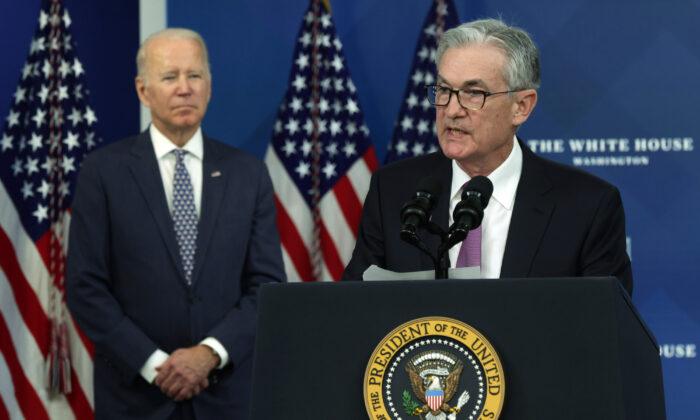Wall Street traders are pricing in June rate hikes and further tapering of bond purchases by the Fed after President Joe Biden on Monday picked Jerome Powell to lead the central bank for another four years.
From the current near-zero level that began in March 2020, traders expect at least a 25-basis point hike in June 2022. Besides this, they are also anticipating a 62 percent chance of at least three increases over the course of the year. Over 30 percent believe there will be a fourth rate hike by the end of 2022.
“The economy is experiencing an increase in inflation, and the Fed has already taken steps to reduce their extraordinary stimulus measures, but they will need to move more quickly in addressing the inflation threats so that they don’t become entrenched,” Chris Zaccarelli, chief investment officer for the Independent Advisor Alliance, told Fox.
The Treasury yield curve dipped sharply after the announcement was made regarding Powell’s second term. Two-year yields increased five basis points on the day. The expected hikes next year were added into 2022 and 2023 contracts, resulting in significant price movements in the eurodollar futures market.
Greg McBride, chief financial analyst at Bankrate.com told CNBC, “With the Federal Reserve at an inflection point of starting to dial back stimulus, continuity at Fed chair is key,” in reference to Powell’s continuation as head of the central bank.
The Fed’s low rates since the pandemic began resulted in easier and cheaper loans, helping the economy get back on its feet. But the persistent low rates despite the recovery have contributed, in part, to significant price increases and inflation, the levels of which have not been seen in 30 years.
The June 2022 rate hikes can commence once the Fed completes its tapering of the bond-buying program and the labor market is fully recovered, suggested Powell. “We will be patient,” he said. “If a response is called for, we will not hesitate.”
Many experts have nevertheless lost confidence, with overall price increases in commodities from meat to gasoline having an adverse effect on the economy.
Meanwhile, the unemployment rate fell to a new pandemic-era low of 4.8 percent last month, with 531,000 more jobs added. As the labor market bounces back, it remains to be seen how much longer the Fed can keep on delaying the rate hikes.
“It is hard to see how the Fed will be able to stay on the sidelines much longer,” Matthew Sherwood, global economist at the Economist Intelligence Unit, said to Fox.
Calls for changes are coming from within the central bank, as Vice Chair Richard Clarida requested discussing the issue of reducing the balance sheet in the Fed’s next meeting, while Fed Gov. Christopher Waller called for winding up bond purchases at a faster pace.
Although gold prices inched higher on Wednesday, the expectation of an imminent rate hike kept it below the $1,800 mark.
“We’re in an era that investors haven’t seen before because you have a significant uncertainty as to whether the Fed will act in time” to prevent inflation from spiraling higher, said Gary Cloud, a portfolio manager of the Hennessy Equity and Income Fund, to Reuters.





